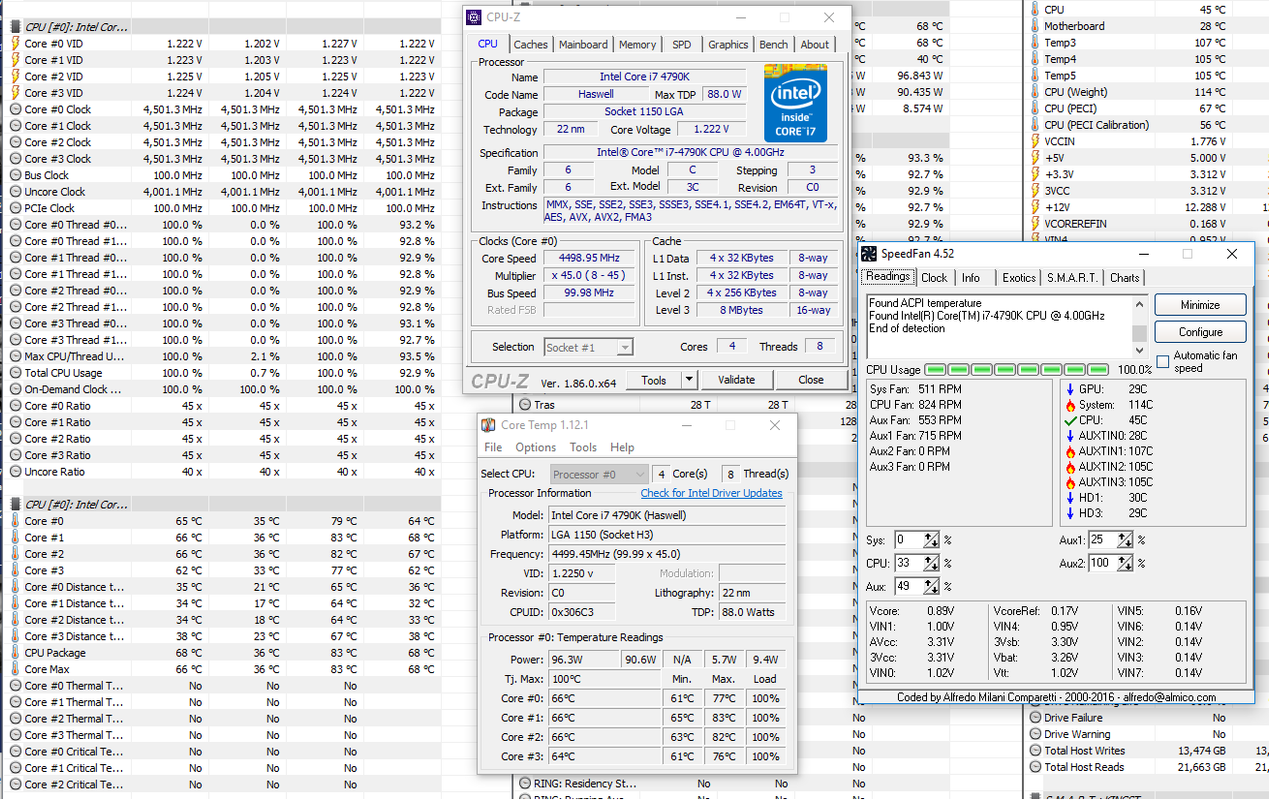- Joined
- 30 Aug 2018
- Posts
- 31
Show same CPUz screen as above with that offset plus temps in hwinfo by scrolling down. Leave the other settings you mentioned at default.
Okay, so, this is 4.5 with the offset.
I noticed the core temperatures were high so I googled it and it seems the cores are okay for up to 90C. It seems Speedfan only measures at the socket and doesn't show the actual processor temperature.
I downloaded CoreTemp to compare the values and it seems those are accurate temperatures.
What do you suggest doing next? The offset worked in altering the voltage, where adding to the multiplier and adjusting the load line setting seemed not to affect it.




 It's not just about heavy tasks, it could crash whilst playing a 2d game for instance. See how you go.
It's not just about heavy tasks, it could crash whilst playing a 2d game for instance. See how you go.